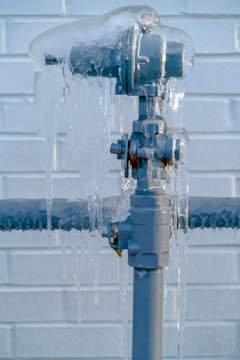Essential Tips to Prevent Frozen Plumbing in Winter
Essential Tips to Prevent Frozen Plumbing in Winter
Blog Article
Everyone has got their private idea on the subject of Preventing and dealing with frozen pipes.
:strip_icc()/snow-outdoor-faucet-pipes-4af65d1e5e904fb1aa7bf74071fe5d89.jpg)
Winter can damage your pipes, especially by freezing pipes. Right here's exactly how to avoid it from occurring and what to do if it does.
Introduction
As temperatures decline, the threat of icy pipelines boosts, potentially leading to pricey repair work and water damages. Recognizing exactly how to prevent icy pipes is crucial for property owners in cold environments.
Understanding Icy Pipes
What creates pipes to freeze?
Pipelines freeze when revealed to temperatures listed below 32 ° F (0 ° C) for extended durations. As water inside the pipelines freezes, it broadens, taxing the pipe wall surfaces and possibly causing them to rupture.
Threats and problems
Frozen pipes can cause supply of water disturbances, property damage, and pricey fixings. Ruptured pipes can flooding homes and cause comprehensive structural damage.
Indicators of Frozen Pipes
Determining icy pipes early can avoid them from rupturing.
How to identify frozen pipelines
Seek lowered water circulation from taps, uncommon smells or noises from pipes, and visible frost on revealed pipelines.
Avoidance Tips
Shielding prone pipes
Cover pipelines in insulation sleeves or use warmth tape to secure them from freezing temperatures. Concentrate on pipes in unheated or external areas of the home.
Home heating methods
Maintain interior rooms properly heated, particularly locations with plumbing. Open up closet doors to enable cozy air to circulate around pipes under sinks.
Safeguarding Exterior Plumbing
Garden pipes and exterior faucets
Detach and drain pipes yard tubes before winter season. Set up frost-proof faucets or cover exterior taps with insulated caps.
What to Do If Your Pipes Freeze
Immediate actions to take
If you presume icy pipelines, maintain faucets open up to alleviate pressure as the ice melts. Use a hairdryer or towels soaked in warm water to thaw pipelines gradually.
Long-Term Solutions
Structural changes
Consider rerouting pipes away from outside wall surfaces or unheated locations. Include additional insulation to attics, basements, and crawl spaces.
Updating insulation
Purchase top notch insulation for pipes, attic rooms, and walls. Proper insulation aids preserve consistent temperature levels and decreases the threat of frozen pipelines.
Final thought
Avoiding icy pipes needs proactive procedures and fast reactions. By recognizing the causes, indications, and safety nets, homeowners can secure their pipes throughout cold weather.
5 Ways to Prevent Frozen Pipes
Drain Outdoor Faucets and Disconnect Hoses
First, close the shut-off valve that controls the flow of water in the pipe to your outdoor faucet. Then, head outside to disconnect and drain your hose and open the outdoor faucet to allow the water to completely drain out of the line. Turn off the faucet when done. Finally, head back to the shut-off valve and drain the remaining water inside the pipe into a bucket or container. Additionally, if you have a home irrigation system, you should consider hiring an expert to clear the system of water each year.
Insulate Pipes
One of the best and most cost-effective methods for preventing frozen water pipes is to wrap your pipes with insulation. This is especially important for areas in your home that aren’t exposed to heat, such as an attic. We suggest using foam sleeves, which can typically be found at your local hardware store.
Keep Heat Running at 65
Your pipes are located inside your walls, and the temperature there is much colder than the rest of the house. To prevent your pipes from freezing, The Insurance Information Institute suggests that you keep your home heated to at least 65 degrees, even when traveling. You may want to invest in smart devices that can keep an eye on the temperature in your home while you’re away.
Leave Water Dripping
Moving water — even a small trickle — can prevent ice from forming inside your pipes. When freezing temps are imminent, start a drip of water from all faucets that serve exposed pipes. Leaving a few faucets running will also help relieve pressure inside the pipes and help prevent a rupture if the water inside freezes.
Open Cupboard Doors
Warm your kitchen and bathroom pipes by opening cupboards and vanities. You should also leave your interior doors ajar to help warm air circulate evenly throughout your home.

I'm just very occupied with How to prepare your home plumbing for winter weather and I really hope you enjoyed reading the entire blog entry. Sharing is good. Helping people is fun. We recognize the value of your readership.
Click Here Report this page